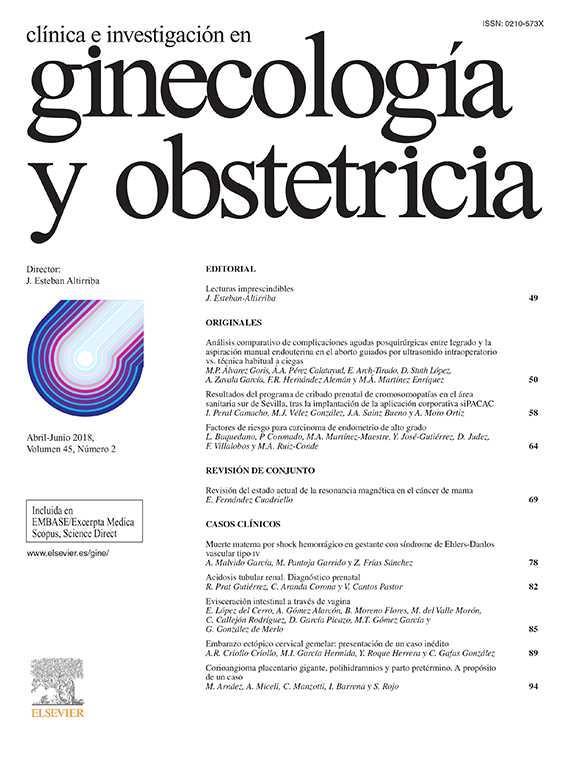Cerebral infarction that affects young women is extremely serious, despite its low incidence, with mortality rates of nearly 20%. In the case of a pregnant woman it is a serious injury at as time of maximum personal and family development.
Although theoretically cerebral apoplexy has very varied aethiopathological causes there are many young women in whom the principal cause is never found. The clinical neurological investigation needs to be supported by radiological diagnostic techniques to make an initial diagnosis between ischaemic or haemorrhage pathology.
Cranial tomography will be indicated by the same criteria as in non pregnant patients, without threatening embryonic or foetal viability. The dosage of radiation used does not endanger foetal well-being, and it should help us try to predict maternal prognosis and to establish the most appropriate therapy.
El infarto cerebral que acontece en mujeres jóvenesno por tener una baja incidencia deja de resultar deextremada gravedad, ya que presenta tasas de mortalidad cercanas al 20%. En el caso de que la mujer seencuentre gestante, se originará un importante menoscabo de salud durante un período de máximo desarrollo personal y familiar.
Aunque teóricamente la apoplejía cerebral responde a muy variadas causas etiopatogénicas, son muchos los casos en mujeres jóvenes en que no se lograestablecer con certeza la razón principal.
La exploración clínica neurológica necesita apoyarse en técnicas de diagnóstico radiológico para discriminar inicialmente entre factores con una patogeniaisquémica o hemorrágica.
La tomografía craneal debe indicarse con los mismos criterios que en otras pacientes no embarazadas,sin que por ello resulte dañada la viabilidad embrionaria o fetal. La dosis de radiación emitida no suponeponer en peligro el bienestar fetal y sí puede aportardatos que nos ayuden a intentar predecir un pronóstico materno y establecer la terapéutica más apropiada.






